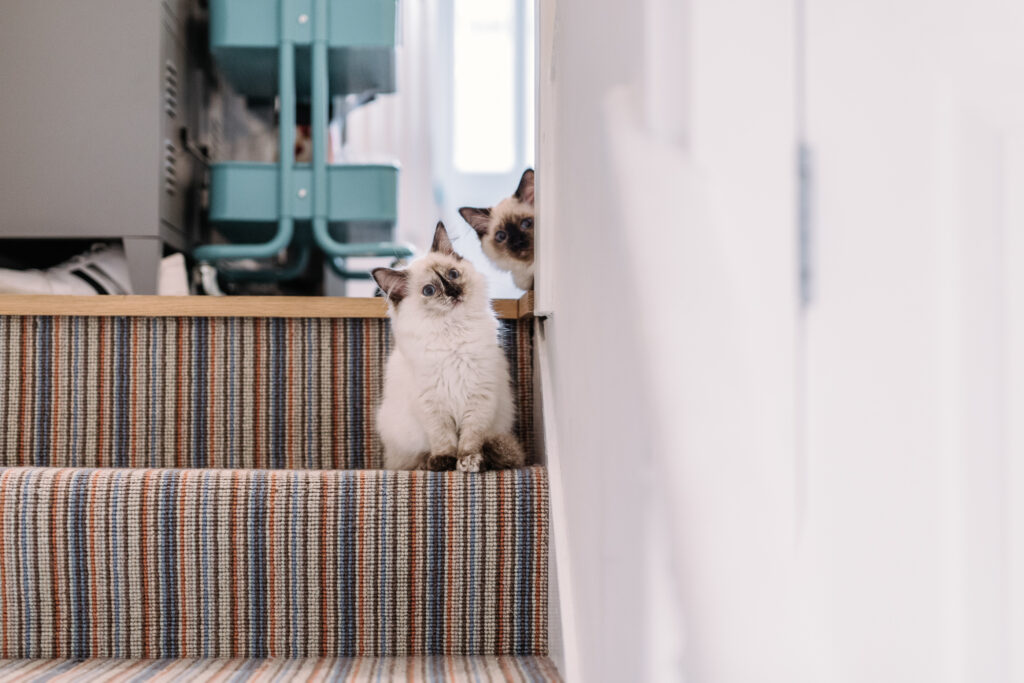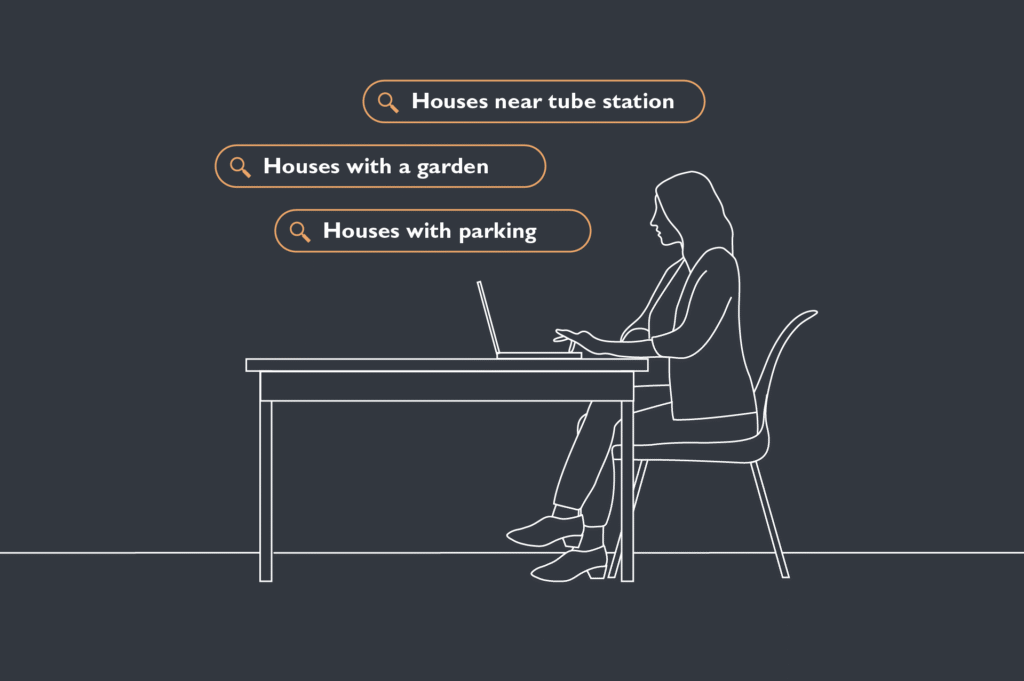The number of lockdown puppies that grew into a small horse and now need a new pad can no longer be ignored. On first scroll through property rentals recently, hearts may have sank at the percentage of apartments that actively agree to a furry tenant / farm animal. That chic little penthouse with the balcony and leafy views across inner North London was an outright no-can-do for the felines. Even that ground floor garden flat with laminate flooring said ‘no way to the doggays’. The reasons behind such pet unfriendliness amongst landlords stands to reason, with little incentive for increasing the probability of property damage. So why the sudden increase in animal accepted tenancy agreements? Here’s our fluffy guide to this amicable increase in pet friendly rentals…

Goodbye blanket bans
Hello puppy blankets instead. Just 7% of private landlords advertised pet friendly properties. A new standard tenancy agreement released by the government in Jan 2021, removed clauses banning pets by default. Landlords using this revised Tenancy Agreement are encouraged to no longer issue a blanket ban on pets. With improved government guidance; we may see a future change that landlords won’t be able to have blanket bans on pet and instead have to consider pets on a case by case basis. ‘I just don’t like their creepy wet noses’ is no longer a viable reason, sorry.
But why the change of heart?
Thanks to our old friends; rising unemployment, multiple recessions, cost of living crisis and general economic uncertainty, the number of people renting has soared in recent years. Add to this a global pandemic which forced many of us into remote working and spending more time at home without our work chums and family around. We have understandably turned to a furry friend for company and comfort since 2020. The heartbeats at our feet have created a demand in pet friendly rentals and put pressure on landlords to revise their pet policies. Studies now show a 50% rise in enquiries for pet friendly rentals since lockdown. A survey by the Dogs Trust indicated that 78% of pet owners struggled to find pet friendly rentals. 54% never find a suitable home. Something had to change!

But what’s in it for the landlord?
Well, Steve, I’m glad you asked. There are many benefits to opening up your property to a menagerie, including an increase in potential tenants and casting a wider net. Within that net you’ll find pet owners who are more willing to be your Goody Two Shoes perfect tenant in order to keep the property. They know how difficult it can be to find a suitable abode amenable to Whiskers the cat. Landlords can also make the savvy financial decision to raise their rents, bearing in mind the discrepancy between supply and demand. What’s more, landlords may attract more families this way – who are more likely to own pets. Families may also be preferable to those young singletons who rent for shorter periods. Isn’t that right, Stevie boy?
Come on Steve, what’s your pet peeve?
We can see you’re still unsure about all of this, so let’s address the elephant(s) in the room. Gosh, sorry, it’s just a turn of phrase. Valid concerns for landlords include the obvious risk of property damage. Not to mention the potential to p*** off the neighbours with prolonged trumpeting in the backyard (just an example, Steve!). There’s also the prospect of increased allergies for consequent tenants, thanks to a sudden abundance of cat hair in the shower / bedframe / washing machine. With all this in mind, there are myriad of measures you can take to protect yourself and your property, while welcoming more creature comforts indoors…

1. Get pet specific
Remember, saying ‘pets considered’ doesn’t mean you are welcoming every pet under the sun. In the same way having a Tinder bio doesn’t mean you’re interested in dating every single woman that ever existed. Although that might be fun while it lasted. As a landlord, you withhold the right to consider furry chums on a cat-by-dog basis and can, of course, include a pet clause. No, that’s not some second-rate cockapoo Santa, but a part of the tenancy contract that specifies permission for the specific pet you’ve agreed to. Not that random Nelly the elephant and her suitcase of tricks you spy elbowing her way into the spare bedroom. Be clear from the off and you’ll avoid any hippo-sized surprises in the future.
2. Say hello to their furry little friend
One way to mitigate any nasty shocks is to receive a character reference on behalf of the pet in question. Either from the current landlord or a vet. Up-to-date medical records will help ensure the little beastie is vaxed, taxed and maxed out on de-wormer (and less likely to invade your property with an army of mites and fleas). What you might also want to do is meet the little critter yourself to really put your mind at rest. This way you can assess Fido’s general temperament, wellbeing and political stance while meeting the potential renters themselves. It could also open up a healthy conversation with your new pet friendly rental tenants with regards to keeping the property in good knick.

3. If you like it then you wanna put a rug on it
Or, take all the rugs out in fact. While your renter is still very much responsible for leaving the property in the same condition as when they moved in, it doesn’t hurt to take some extra measures to pet-proof your property. Steer clear of more expensive furniture and furnishings. Also, look into installing plastic coverings and claw guards along the bottom of any sofas, door frames and skirting boards. Adding accidental pet damage to your insurance policy will go a long way in putting your mind at rest. And you can sleep easy knowing you’ve helped a tenant and their best friend find somewhere welcoming to lay their head at night too.
To discuss making your rental property pet friendly contact Alex using the details below.
Contact us:
alex@daviesdavies.co.uk – Lettings Director (contact for lettings and property management)
mark@daviesdavies.co.uk – Sales Director (contact for sales, new homes and chartered surveying)
Davies & Davies Estate Agents, 85 Stroud Green Road, London, N4 3EG
Article & images by Barefaced Studios
You might also want to read other useful blog articles by clicking here.

So, you’ve finally decided to take the plunge and buy your first home. Congratulations! You’ve battled through confusing mortgage lingo, survived the viewing marathons, and maybe even resisted falling in love with a flat above your favourite chicken shop (no judgment, the smell of chip oil is comforting). But just when you think you’re on the home straight… someone mentions the chain. Cue dramatic music and a sudden sinking feeling. Don’t panic-chains are common, not catastrophic. But they can cause delays and derailments if you don’t know what you’re dealing with. So, let’s unpick the mystery of property chains and show you how to dodge the drama.
Read More...
We crunched the Google data so you don’t have to – here are the top 20 features North London buyers are obsessively searching for this year (and how we use that intel to sell smarter).
Read More...
Big changes are coming for landlords-and no, we’re not talking about EPC ratings or rogue tenants. HMRC is going digital, and if you’re a landlord earning over £50k a year, you’ll need to join the party by April 2026. Sound stressful? Don’t worry-we’ve got the plain-English version right here, no tax jargon overload to contend with over your corn flakes…
Read More...Get in Touch
Opening Times
Mon – Thurs: 0900 – 1815
Fri: 0900 – 1800
Sat: 1000 – 1600
Sun: Appointments by request